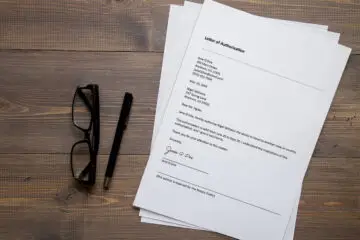By Verifying the authenticity of a notarized document is crucial to ensure its legality and prevent fraud. A notarized document serves as proof that the signatures are genuine and that all parties signed willingly under the notary’s supervision. Fraudulent notarized documents can lead to legal complications, financial losses, and challenges in verifying personal or business transactions. Here are key steps to confirm its authenticity.
Check for the Notary Seal and Signature
A legitimate notarized document must include a notary’s official seal and signature. The seal can be an embossed or inked stamp containing the notary’s name, commission number, and expiration date. If the seal appears smudged, unclear, or missing, it may indicate a fraudulent document. Some states require an embossed seal, while others permit inked stamps. If you are uncertain, check state regulations to ensure the seal complies with legal standards.
Verify the Notary’s Commission Details
Each notary public is assigned a commission number and an expiration date by their state. You can verify the notary’s credentials by checking with the state’s notary database or secretary of state’s office. Most state agencies offer online verification portals where you can enter the notary’s details to confirm their legitimacy. If the notary’s commission is expired or nonexistent, the document may not be valid. Some fraudulent documents may include fake commission numbers, so verification is essential.
Confirm the Notarial Certificate
The notarial certificate provides details about the notarization process, including the date, location, and type of notarization performed. It should match the jurisdiction’s legal requirements. Missing or incorrect details can indicate an invalid notarization. A proper notarial certificate will include information about whether the signer was placed under oath or acknowledged the document willingly. If the wording in the certificate does not match state requirements, it may be necessary to have the document notarized again.
Review the Signer’s Identity Verification
A notary must verify the identity of signers using government-issued identification before notarizing a document. The ID must be current and valid, such as a driver’s license, passport, or state-issued ID card. The name on the document should match the name on the ID. If there are doubts about the signer’s legitimacy, you may need to confirm whether proper identification was presented during the notarization process. Some states allow the use of credible witnesses when a signer lacks appropriate ID.
Contact the Notary Public
If you suspect a notarized document is fraudulent, you can reach out to the notary who performed the notarization. Their contact details should be available through the state’s notary registry. The notary can confirm if they notarized the document in question. If the notary is unresponsive or denies performing the notarization, the document may be fraudulent. Reporting such cases to the appropriate regulatory agency can help prevent further misuse.
Verify with the Issuing Authority
For documents used in official or legal matters, such as property deeds, contracts, or affidavits, verifying with the issuing authority can provide confirmation. Government agencies, legal offices, and banks often maintain records of notarized documents for reference. Some documents, such as birth certificates and marriage licenses, are issued by government offices and may require additional authentication. If you are dealing with financial or real estate documents, checking with the relevant institution is essential.
Look for Signs of Tampering
Alterations, erasures, or inconsistencies in a notarized document may indicate fraud. Any changes after notarization, such as missing pages or altered signatures, can make the document invalid. Watermarks, security features, and paper quality can also indicate authenticity. If the document appears altered, seeking legal advice or having it reviewed by a professional can help confirm its validity.
Obtain an Apostille or Authentication
For notarized documents used internationally, an apostille or authentication certificate may be required. This verification process, handled by the appropriate government agency, ensures the document’s acceptance in foreign jurisdictions. An apostille certifies that the notary’s signature and commission are valid for use in countries that are part of the Hague Convention. If a country is not part of this agreement, additional authentication steps, such as certification by the U.S. Department of State, may be necessary.
Legal Consequences of Using Fraudulent Notarized Documents
Using a fraudulent notarized document can lead to serious legal consequences, including fines, imprisonment, and voided agreements. Many jurisdictions classify document fraud as a felony, with severe penalties for those who attempt to use or produce falsified notarizations. Individuals involved in real estate, legal, and financial transactions should exercise caution to avoid unknowingly engaging in fraudulent activities.
Steps to Take If You Suspect a Fake Notarized Document
If you suspect a notarized document is fraudulent, report it to the appropriate authority. Contact the secretary of state’s office, law enforcement, or legal professionals for guidance. Keeping records of correspondence and documentation related to the suspected fraud can be helpful if legal action is required. Avoid signing or using the document until its authenticity is confirmed.
Conclusion
Verifying a notarized document involves checking the seal, confirming the notary’s credentials, and ensuring the notarial certificate is accurate. If any doubts arise, contacting the notary or relevant authority can help determine authenticity. Staying vigilant against fraudulent notarized documents protects legal and financial interests. With careful verification, individuals and businesses can ensure the legitimacy of their documents and avoid legal complications.




0 Comments